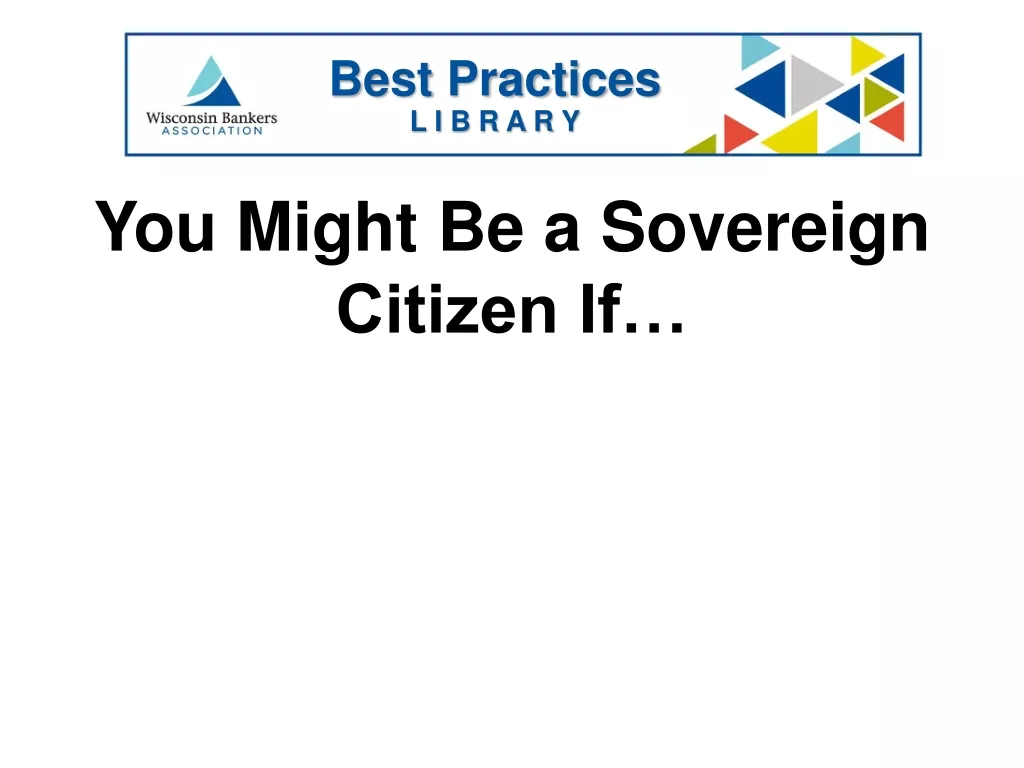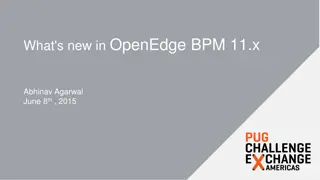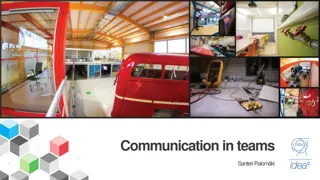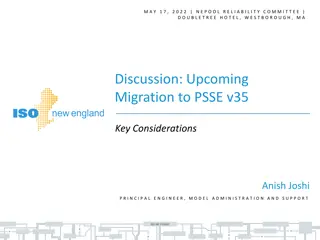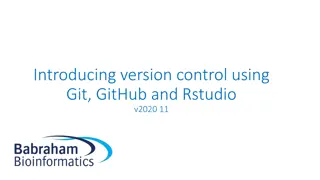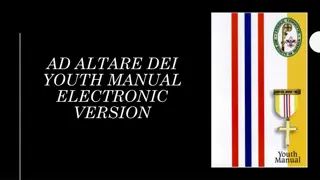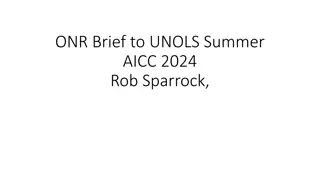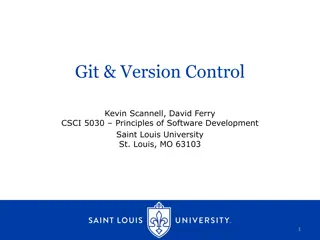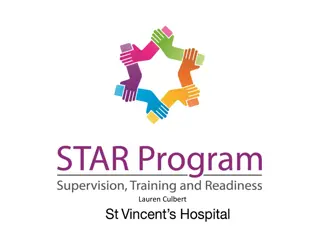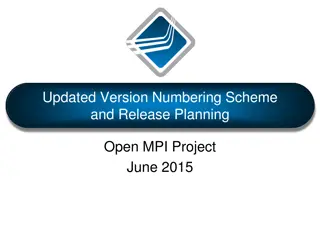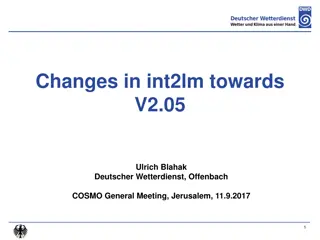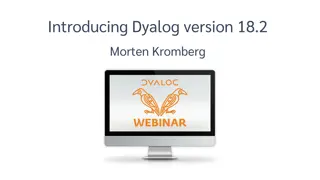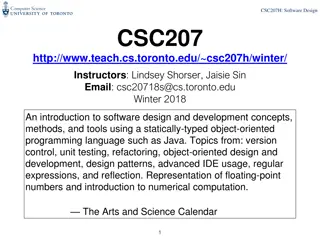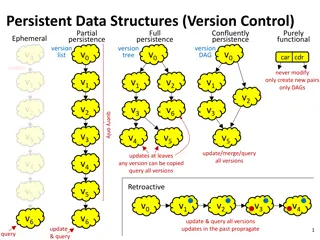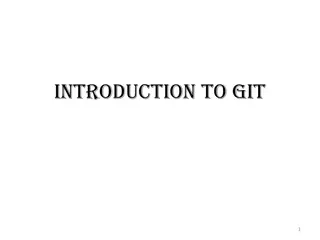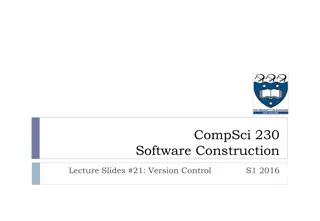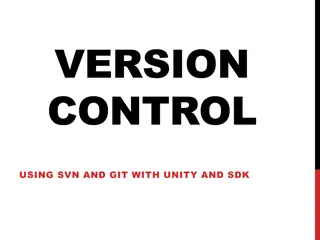
Understanding MBTI Workshop: A Comprehensive Overview
Dive into the world of MBTI through a workshop aiming to promote self-understanding, explore personality differences, and develop effective communication strategies. Discover key concepts, workshop structure, reasons for using MBTI, and its various applications in personal and professional settings.
Download Presentation

Please find below an Image/Link to download the presentation.
The content on the website is provided AS IS for your information and personal use only. It may not be sold, licensed, or shared on other websites without obtaining consent from the author. If you encounter any issues during the download, it is possible that the publisher has removed the file from their server.
You are allowed to download the files provided on this website for personal or commercial use, subject to the condition that they are used lawfully. All files are the property of their respective owners.
The content on the website is provided AS IS for your information and personal use only. It may not be sold, licensed, or shared on other websites without obtaining consent from the author.
E N D
Presentation Transcript
MBTI One Day Workshop Wednesday February 14th, 2007 Darren Caudle and Martin Wynn University of Gloucestershire Business School
Aims & Outcomes Aims: To promote understanding of yourself & others through the MBTI instrument Outcomes: To provide information on the basic concepts of psychological types that form the basis of MBTI To explore the characteristics of own type and that of others To encourage the valuing of individual personality differences To promote opportunities to work more effectively with others
Workshop Structure 0. General Introduction 1. Introduction to MBTI 2. Filling in the Questionnaire (plus coffee break) 3. Understanding preferences E or I 4. Understanding preferences S or N 5. Understanding preferences T or F 6. Understanding preferences J or P 7. Summarising your MBTI: self assessment & questionnaire (lunch) 8. Introduction to Type Dynamics (the next level ) 9. Developing Understanding: Type and Communications exercise (tea) 10. Developing Understanding: Type & Change exercise 11. Questions, feedback form and close
1. Introduction to Myers Briggs Type Indicator Darren Caudle
Reasons for Using the MBTI Instrument The MBTI instrument: Is a self-report instrument Is non-judgmental Indicates preferences Sorts instead of measures Is well researched Deals with everyday behaviour of normal people
Key Type Concepts Type is innate Type can be influenced Type is observable Type indicates preferences, not skills All the preferences are equally valid and important Everyone uses all the preferences at some time Individuals are the best judge of their type Type is not a box and type is not an excuse
Applications of the MBTI Developing effective teams Improving communication and resolving conflict Identifying leadership styles Enhancing personal development Exploring problem solving and learning styles Understanding reactions to change and stress Career development It is not usually used for recruitment as it indicates preferences and is not a measure of ability or skill!
2. Filling in the Myers Briggs Type Indicator Questionnaire Darren Caudle
Overview of the four MBTI dichotomies How do you prefer to be energised? Extraversion or Introversion What kind of information do you prefer to pay attention to? Sensing or Intuition How do you prefer to process information and make decisions? Thinking or Feeling What lifestyle do you prefer Judging or Perceiving
PAIR OF PREFERENCES E I S N T F J P
3. Understanding the Preferences: How are you energised? ( E or I ) Martin Wynn
Extraversion/Introversion Where do you prefer to focus your attention? How are you energised? Introversion Introversion Extraversion Extraversion Preference for drawing your energy from the world around you, from doing , from involvement in external events and contact with people Attuned to external environment Friendly, talkative, easy to know Prefer to talk through problems Expresses emotions Needs relationships Learn best through doing or discussing Tend to speak and act first, reflect later Preference for drawing your energy from your internal world, through quiet reflection, focusing on your inner thoughts or ideas. Drawn to contemplation in inner world Reserved, quiet, harder to know Prefer to think through problems Bottles up emotions Needs privacy Learn best by reflection, mental practice Tend to reflect before acting or speaking
EXTRAVERSION INTROVERSION
EXTRAVERTING INTROVERTING
COMMUNICATIONS Extraversion Introversion
SOME KEY WORDS E I EXTRAVERSION ACTIVE OUTWARD SOCIABLE PEOPLE MANY EXPRESSIVE BREADTH INTROVERSION REFLECTIVE INWARD RESERVED PRIVACY FEW QUIET DEPTH
MBTI Worksheet self assessment 50 40 30 20 10 60 0 10 20 30 40 50 60 Extraversion E I Introversion How clear are you that this is your preference? (60 = very clear; 0 = not clear at all).
4. Understanding the Preferences: How do you acquire information? ( S or N ) Darren Caudle
Sensing/iNtuition What kind of information do you prefer to pay attention to? How do you acquire information? Intuition Intuition Sensing Sensing Preference for attending to specific information and facts to find out what is actually happening. Observant of what is going on around you and especially focused on the practical realities of the situation. Preference for attending to the patterns and associations between facts rather than the facts themselves Focus on big picture possibilities Value imaginative insights Abstract and theoretical See patterns and meaning in facts Enjoy anticipating the future Stimulated by ambiguity Likes change and variety Jumps in anywhere, leaps over steps Trusts inspiration Focus on what is real and actual Value practical applications Factual and concrete, notice details Observe and remember specifics Enjoy the present Want information to be accurate and precise Likes set procedures, established routines Starts at the beginning, takes a step at a time Trusts experience
SENSING INTUITION This tastes nice! I wonder if we are having cheese afterwards?
SENSING INTUITION I ve just had a great idea for next week s meeting! FANTASTIC
SENSING INTUITION Look at that fabulous house! This would make a great safari park!
SENSING INTUITION How about a wild garden instead? Let me fix it .
STRATEGY DEVELOPMENT Where do you start from? N S SWOT 5 FORCES GOAL PEST VISION
SOME KEY WORDS S N SENSING DETAILS PRESENT INTUITION PATTERNS FUTURE IMAGINATIVE INNOVATIONS RANDOM HUNCHES VARIETY ANTICIPATION INSPIRATION CHANGE PRACTICAL FACTS SEQUENTIAL DIRECTIONS REPETITION ENJOYMENT PERSPIRATION CONSERVE
MBTI Worksheet self assessment 60 50 40 30 20 10 0 10 20 30 40 50 60 Sensing S N Intuition How clear are you that this is your preference? (60 = very clear; 0 = not clear at all).
5. Understanding the Preferences: How do you prefer to make decisions? ( T or F ) Martin Wynn
Thinking/Feeling How do you prefer to make decisions? Thinking Thinking Feeling Feeling Preference for making decisions from a detached standpoint, by analysing the logical consequences of a choice or action. Applying objective criteria and using consistent rules and principles. Often trying to stand outside a situation to examine it objectively and analyse cause and effect. Guided by objective logic Decides with head Focus on cause and effect Look for flaws in logic Apply consistent principles to deal with people Concerned for truth, justice Focus on the task and outcomes Preference for making decisions from an involved standpoint, by gauging the impact of actions on your personal convictions. Seeking harmony and judging the importance of the different values involved. Often placing yourself inside a situation so as to identify personally with its key issues. Guided by personal values and convictions Decides with heart Focus on harmony with own and others values Look for common ground and shared values Treat each person as a unique individual Concerned for relationships, harmony Focus on support and process
THINKING FEELING
THINKING FEELING How s the family? Let s get down to business!
SOME KEY WORDS T F THINKING HEAD OBJECTIVE FEELING HEART SUBJECTIVE HARMONY CARING PERSONAL APPRECIATE EMPATHISE PERSUASIVE VALUES IMPACT JUSTICE COOL IMPERSONAL CRITICISE ANALYSE PRECISE PRINCIPLES IMAGE
DISNEY HOLIDAY EXERCISE You have 4 employees in your team. You have 3 tickets for some of them to go to Disney Land (You have already been there so you don t want to go). How do you decide which of your staff can go?
MBTI Worksheet self assessment 60 50 40 30 20 10 0 10 20 30 40 50 60 Thinking T F Feeling 60 50 40 30 20 10 0 10 20 30 40 50 60 How clear are you that this is your preference? (60 = very clear; 0 = not clear at all).
6. Understanding the Preferences: Which lifestyle do you prefer? ( J or P ) Darren Caudle
Judging/Perceiving Which lifestyle do you prefer? Judging Perceiving Preference for coming to closure on decisions, preferring to live life in scheduled and orderly ways and wanting things to be controlled and regulated. Liking to make plans and then sitcking to those plans until they are completed. Getting satisfaction from getting things done. Prefers an organsed lifestyle Likes to get things decided Scheduled and organised Enjoys decision-making and planning Likes clear limits and categories Dislikes working under time pressure Preference for keeping open to new experiences and information. Preferring to live life in a flexible, spontaneous way. Comfortable going with the flow and taking advantage of last minute options as they arise. Enjoying using resourcefulness and adaptability and feeling constrained by plans and structures. Prefers a flexible lifestyle Likes to keep options open Spontaneous and adaptable Enjoys the process, no decision before its time Likes freedom to explore without limits Energised by last minute time pressures
J P
J P PROPOSAL DRAFT PROPOSAL Introduction Introduction Key Facts Key Facts Decision Criteria Decision Criteria Key Facts Decision Criteria Awaiting further research
J P IN OUT IN OUT
BENEFITS FROM NOT THINKING ABOUT THE FUTURE The nicest thing about not planning, is that failure comes as a complete surprise . and is not preceded by that awful period of worry and depression!
SOME KEY WORDS J P (Judgment) (Perception) ORGANISED FLEXIBLE STRUCTURE FLOW CONTROL DECISIVE DELIBERATE CLOSURE PLAN DEADLINES PRODUCTIVE EXPERIENCE CURIOUS SPONTANEOUS OPENNESS WAIT DISCOVERIES RECEPTIVE
MBTI Worksheet self assessment 40 30 20 10 0 60 50 10 20 30 40 50 60 Judging J 60 50 40 30 20 10 0 10 20 30 40 50 60 P Perceiving How clear are you that this is your preference? (60 = very clear; 0 = not clear at all).
7. Summary of MBTI type: self assessment/questionnaire analysis Darren Caudle
MBTI - Worksheet 60 50 40 30 20 10 0 10 20 30 40 50 60 Extraversion E I Introversion Sensing S N Intuition Thinking T F Feeling Judging J 60 50 40 30 20 10 0 10 20 30 40 50 60 P Perceiving S elf-D iagnostic T ype M B T I1 R eport T ype B est F it T ype
-Reflect on self assessment vs questionnaire indicator - Study relevant descriptor in Introduction to Type book - Agree on best fit type
MBTI IS NOT ABOUT BOXES It is not the purpose of a psychological typology to classify human beings into categories; this in itself would be pretty pointless . Jung, Collected Works, Vol. 6, para 986

![❤[PDF]⚡ Space Exploration 2007 (Springer Praxis Books)](/thumb/21607/pdf-space-exploration-2007-springer-praxis-books.jpg)
